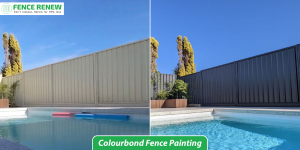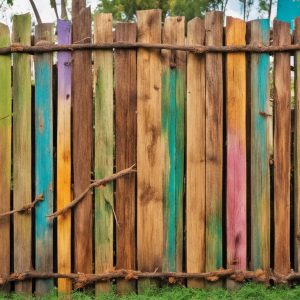As a homeowner, picking a fence color can seem like a minor detail compared to other landscaping decisions. However, the hue of your fence can significantly impact the overall aesthetic of your home. While traditional choices like white for picket fences or brown for taller barriers are common, it’s important to remember that your fence is an extension of your home’s interior and should reflect your personal style.
The color of your fence doesn’t just affect curb appeal; it also influences the first impression you get when returning home. Furthermore, a well-chosen fence color can enhance the beauty of your backyard. As Marianne Shillingford, a renowned color expert, puts it, “Your fence frames your yard, patio, and planters. Choosing the right paint color is an effective way to showcase your outdoor space.”
However, selecting a fence color isn’t just about pleasing others; it should primarily bring you joy. The following suggestions are meant to guide you and not to be rigid rules. Here are four fence colors that experts recommend avoiding, along with more stylish alternatives.
A dark green fence may seem like a natural choice for outdoor spaces as it blends in with the surroundings. However, this might not always be the best choice. Tash Bradley, director of interior design at Lick, explains that colors that blend too closely with surrounding elements can make your fence visually disappear and lose its intended purpose as a boundary or backdrop. Instead, consider a more subtle yet visible shade like sage green. Michael Rolland, paint expert at The Paint Shed, suggests that this earthy tone can create a welcoming outdoor space while making your garden appear larger.
For metal fences, black is a popular color. However, for heavier wooden fences, jet black can create an overwhelming border, especially in smaller yards. It also absorbs heat, which can make your outdoor spaces feel hotter in summer. Experts recommend a more subtle charcoal grey as a better alternative. This color provides a great backdrop among garden foliage. “We’ve seen an increase in silver-grey fence paint, which is perfect for those seeking a lighter boundary,” says Michael.
Bright pink might be appealing in interior spaces, but in natural settings, it can appear harsh and overstimulating. Tash Bradley suggests that such colors could create an artificial look and disrupt the serenity of your garden. Instead, consider pastel hues or dusky roses with grey undertones. If you want to play it safe, opt for a delicate beige or taupe.
Lastly, deep purple is another color to avoid when painting your fence. This shade is often used to signify private property and ward off trespassers in many states. However, it can also appear unnatural and jarring in an outdoor setting. A more favorable alternative would be a dark blue, which blends well with nature and doesn’t draw attention to the boundaries.
In conclusion, while choosing a fence color might seem like a minor detail, it plays a significant role in enhancing the aesthetic appeal of your home. So next time you’re looking for a “Colourbond fence painter near me” or planning some “fence repairs near me,” consider these tips to ensure that your fence adds to the beauty of your home and garden.




